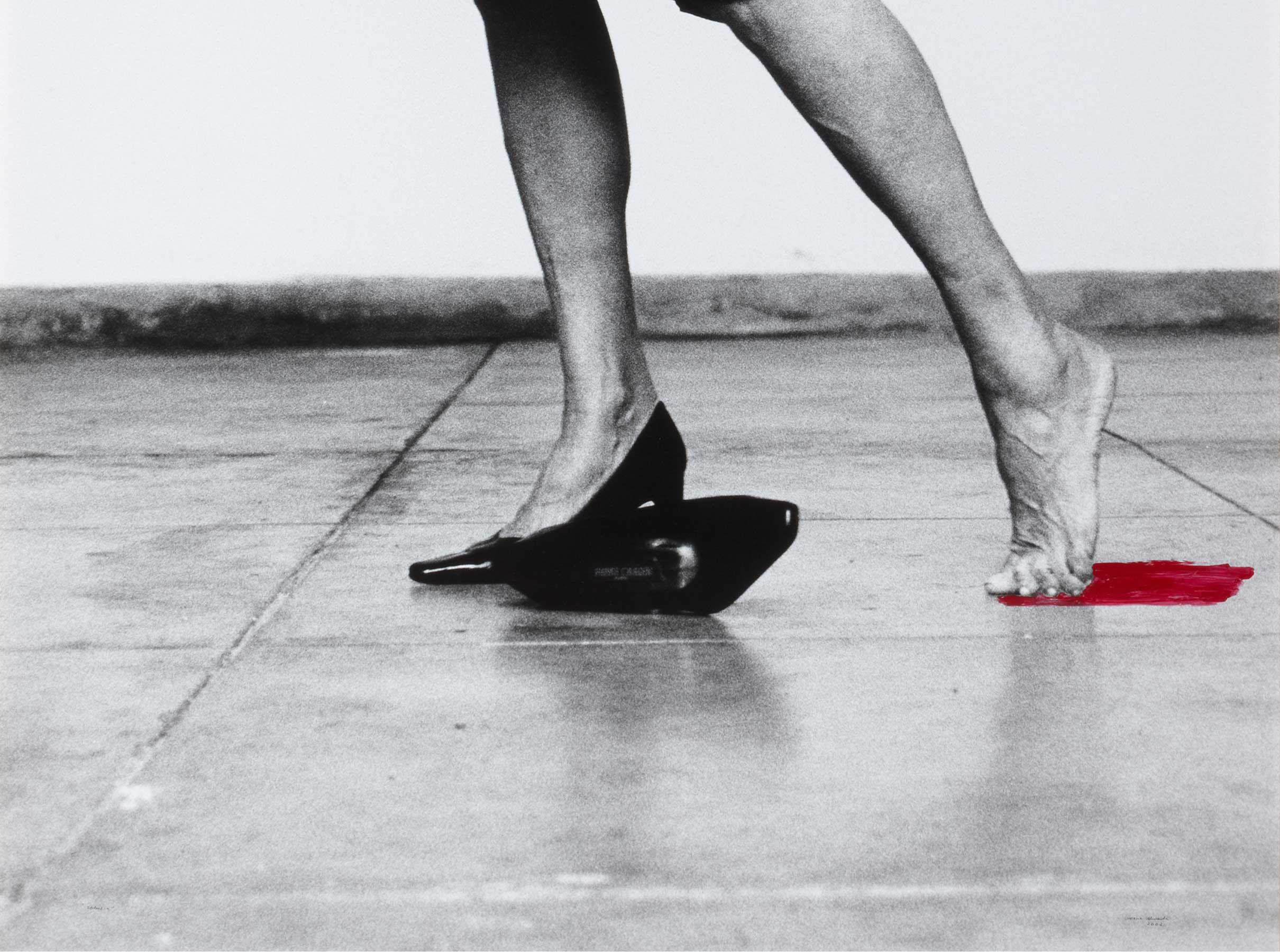Pieter Vermeersch is a Belgian artist known for his meticulous explorations of color and light in abstract paintings and large-scale compositions. Untitled is one such large-format work distinguished by a gradient of muted, ethereal colors that seem to evoke the sky at dawn. The painting is a vertical field of color that gradually shifts from pinkish to bluish hues. This effect is achieved through a systematic painting technique inspired by photography, with mechanical reproduction as a practical prerequisite, resulting in a personal style that the artist describes as “hyperrealistic abstraction.” Vermeersch’s signature gradient not only demonstrates his technical mastery but also creates a visual experience that invites deliberate consideration of time. The smooth transition of colors fosters a contemplative, even meditative, feeling, compelling the viewer to pause and reflect on the nature of time.
Vermeersch’s works may fall within a tradition that traces back to the experiments with light and color of the Impressionists, yet also possess a contemporary sensibility close to the mathematical. Each of his paintings is an attempt to capture the behavior of light and its interaction with real space. In his Untitled series, to which this piece belongs, each canvas recreates a photograph taken at a different exposure, in a meticulous study of light and time. Thus, his work, though seemingly informal, alludes to the dialectic between abstraction and representation, autonomy and contingency. In his gradations of color, the artist achieves a synthesis of these dichotomies, creating images that are simultaneously abstract and representational, autonomous and spatially dependent.
The photographic image that the artist transfers to the canvas ceases to be frozen in time and tied to the moment it was captured. By reproducing it on the pictorial plane, Vermeersch seeks to endow it with an absolute dimension of time and, in a sense, to liberate it.1 Temporality is therefore central to the work, as it is to the process of creation. The methodical technique of applying layers of color to achieve the perfect gradient often extends over several hours and requires almost monastic concentration. Vermeersch himself has often highlighted the ritualistic and self-sacrificial aspects of his work, emphasizing the physicality andconcentration required to avoid errors in color mixing. Untitled reveals the importance of time in the very act of painting.
The monochrome fading appears as if a prolonged, organic, photosensitive process had actually taken place on the canvas. The absence of a focal point in Vermeersch’s gradations forces the observer’s gaze to move continuously across the surface of the work, to engage in an act of observing that is both physical and temporal. The transition of colors creates an immersive sensory effect that goes beyond the merely visual. Untitled evokes a specific time of day, dawn, which prompts the viewer to experience the sensations that accompany that moment. Thus, the piece is not just a work to be seen but a temporal experience that calls for complete engagement and contemplation.
1. Pieter Vermeersch, “Pieter Vermeersch: The Importance of Matter,” interview by Mechteld Jungerius, TL Magazine, January 17, 2021. https:// tlmagazine.com/pieter-vermeersch-the-importance-of-matter/
The Banco de España Collection has two pieces by Pieter Vermeersch, a Belgian artist who has stood out in recent decades for his approach to the language of abstraction from the twofold perspective of the tradition of Baroque Enlightenment and the legacy of photography in its most absolute form: that of capturing light and its gradation effects on the paper in formats such as Polaroid. Both works reflect one of Vermeersch’s most significant hallmarks, which is his subtle gradating of fields of colour. The transition of light is interrupted by a series of ‘chapters’, ranged discontinuously from the lightest to the darkest in the polyptych Painting # 24 (2007), and Untitled(2014), a larger, more recent work, features a similar modulation within a single colour, in this case pink, but in a single composition designed to be read vertically. The degree of perfection in the execution of that chromatic gradation gives the images the quality of a printed photograph. However, it is the outcome of a bottom-down analytical process that is purely pictorial and rather mechanical, which Vermeersch usually produces in a single day, so that even the activity of his body is set, like the change of light, by the circadian rhythm that causes fluctuations in the organism with the passing of the hours and the natural cycle of atmospheric changes.
Other works by Pieter Vermeersch

![Sin título [Untitled]](/f/webca/INF/assets/img/fff.png)